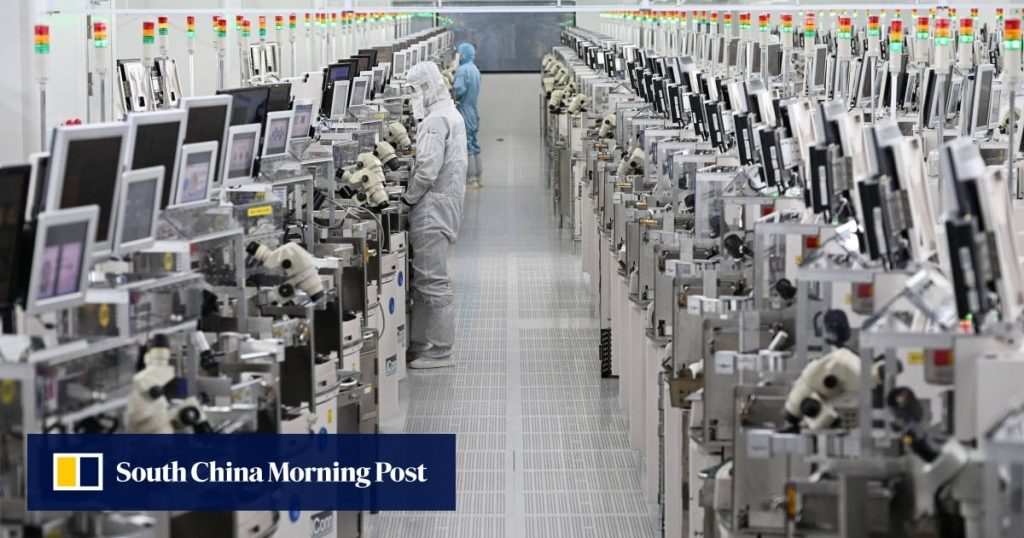Chinese researchers claim to have achieved a key breakthrough in lithography technology in the latest step in the country’s effort to achieve self-sufficiency with advanced chips.
A group of scientists from Peking University, along with other collaborators, made a breakthrough in visualising the molecular behaviour of photoresist, a light-sensitive material used in chipmaking, according to a paper published in top scientific journal Nature. The advance could lead to a significant reduction in defects in advanced chip manufacturing, they said.
Photoresist, used in processes such as photolithography and photoengraving that involve forming a patterned coating on a surface, is a key input in chip manufacturing. China’s reliance on imported photoresist material is one factor restricting its advanced chip-production capabilities.
The paper, first reported by the state-backed Science and Technology Daily on Friday, was touted by the newspaper as a step to solve “a key bottleneck hindering yield improvement” in advanced processes at 7 nanometres and below.
The breakthrough is seen as a boost to China’s self-sufficiency, as lithography remains one of the biggest chokepoints. The world’s leading chip equipment supplier, ASML, has been banned from selling its most advanced extreme ultraviolet (EUV) lithography machines to China since 2019 under pressure from the US.
“Despite decades of research, the microscopic behaviours of photoresist in liquid film and at interfaces remain elusive”, the researchers said, adding that this made defect control “largely a trial-and-error process”.


